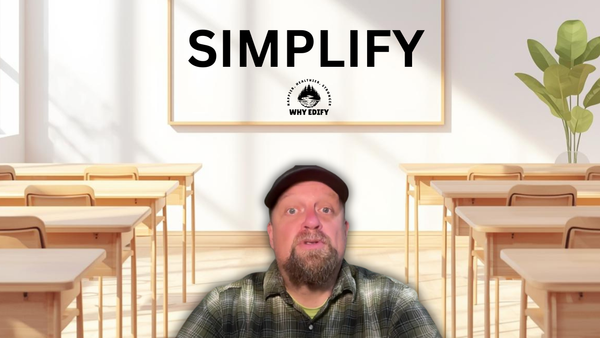The Gift of Time: Teaching Patience in a Fast World
In a world that celebrates speed, patience is a superpower. Discover how teachers can help students—and themselves—slow down and grow with purpose.

We live in a world that moves at lightning speed. One tap delivers dinner, one click plays any song, one question summons instant answers.
But real learning — the kind that shapes character, confidence, and wisdom — takes time.
As teachers, we see this every day. Students want quick grades, quick feedback, and quick success. And we can’t blame them — they’re growing up in a culture that celebrates speed over depth. But the classroom can be one of the few places left where we remind them: not everything meaningful happens fast.
The Slow Work of Learning
Patience isn’t a passive act. It’s a muscle that strengthens through practice.
The Stoics taught that what we can’t control, we must accept. Growth takes as long as it takes. In the classroom, that means helping students embrace the process — the drafts, the redos, the quiet practice that leads to mastery.
Ikigai, the Japanese philosophy of living with purpose, teaches the same lesson through another lens: fulfillment comes from consistent, intentional effort — keiko, or disciplined practice. When we show up every day and focus on small improvements, patience becomes the path to progress.
Teaching Patience in a World That Doesn’t Wait
So how do we teach patience when everything around us screams “hurry up”?
Here are a few ways to slow the current:
1. Model Process Over Perfection.
Talk openly about how your own growth takes time. Let students see you refine lessons, reflect, and adjust. The transparency helps them see learning as a journey, not a race.
2. Celebrate Slow Wins.
Highlight persistence, not just results. When a student sticks with a project, rewrites an essay, or improves a lab skill after feedback — celebrate that grit.
3. Build Reflection Time Into the Day.
End class with one minute of journaling or quiet reflection. Ask: What did you learn today that took patience? Small pauses help students recognize that slow progress is still progress.
4. Create Opportunities for Deep Work.
Design lessons that require focus over time — long-term projects, reading marathons, creative challenges. Help students rediscover what it feels like to lose track of time doing something meaningful.
5. Talk About Time as a Teacher’s Tool.
Remind students that we use time to think, to revise, to rest. Taking moments to pause allows our minds to process new information. Careful reflection helps us identify areas for improvement.
The Patience Practice for Teachers
Patience isn’t just for our students; it’s a gift we give ourselves.
We want instant results, too — higher test scores, smoother lessons, more energy. But some seasons of teaching are about planting, not harvesting. Every conversation, every connection, every small improvement adds up.
Progress in education often moves more slowly than we’d like — but that doesn’t mean it isn’t moving.
So, take a breath. Trust the process.
Give yourself the same patience you give your students.
Because the best things we build — understanding, trust, growth — always take time.
👉 Keep Growing: Join The STRONG Teacher’s Lounge — a community of educators learning to slow down, reflect, and grow stronger together.
Strong Teacher Pep Talk Playlist
Explore the Teacher Reset Kit → My curated storefront with journals, books, and wellness gear that helps teachers recharge. (Purchases earn a small commission that keeps this newsletter free.)
Explore the Bonfire Shop → You’ll find shirts, mugs, and reminders to pause, renew, and stay strong.
Join the STRONG Teacher’s Lounge → A supportive space where educators share expertise, swap strategies, and learn from one another. Your voice matters here, and your presence helps strengthen our collective mission. Join Here!
Every purchase and every new member helps support the Why Edify Community. Thank you for being part of it!



